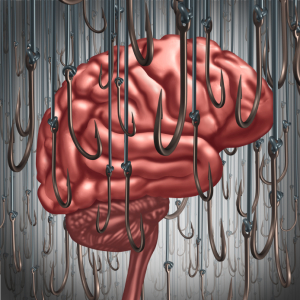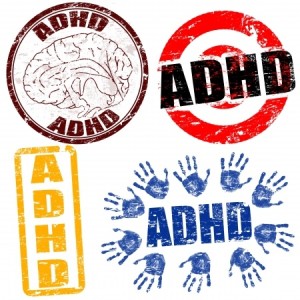Now There’s Chewable Speed

Do you have a difficult time giving your child ADHD medication? Not that you don’t want them to take it—you do. But they don’t like the taste; or they have problems swallowing pills; or they just don’t like how it makes them feel. Or maybe you’re an adult who chronically forgets to take your medication in the morning. You don’t want to carry a prescription bottle around with you. People may wonder why you are popping pills in the middle of the day. Now there is an ADHD medication that is right for you! It’s chewable and comes in fruit flavors too!
Okay, the paragraph above was a tad satirical, but it is entirely true in what it said about ADHD medication. In mid-May of 2016, Adzenys, a chewable, fruity form of amphetamine became available. As STAT reported, Adzenys XR-ODT was approved by the FDA in January of 2016 by the FDA for patients six and older. The CEO of Neos Therapeutics said they were “launching now at full speed.” They want to get “ahead of back-to-school season.”
Vipin Garg, the CEO of Neos, said the new quick-dissolving formula will help “harried mothers” get their children medicated faster in the morning before school. And if adults forget to take their pill at breakfast, they can “pop a tablet” on the way to work—it comes in a blister pack, not in a pill bottle. “You go to a pharmacy, and everything is in gummy bear format. . . . Why would that be the case if there wasn’t a need for this?” Garg sees the dissolving tabs as part of a trend to make medications more pleasant to take.
All that adds up to a booming market. Sales for ADHD medications were at $4.7 billion in 2006, had nearly tripled to $12.7 billion by last year, and are projected to grow to $17.5 billion by 2020, according to a 2015 report from market research firm IBISWorld.
Adzenys is not alone as a chewable ADHD medication. In December of 2015, one month ahead of Adzenys, the FDA approved QuilliChew for Pfizer. Similar to Adzenys, it is an extended release tablet and was approved for patients six and older. The tablet is even scored, so it can be easily halved to individualize the needs of the patient taking it. The active ingredient in QuilliChew is methylphenidate hydrochloride.
Ann Childress, the president of the Center for Psychiatry and Behavioral Medicine in Las Vegas, was quoted by Medscape as saying: “As a physician, it is important to have treatment choices for patients with ADHD and their caregivers. QuilliChew ER extended-release chewable tablets give healthcare providers an additional treatment option to meet their patients’ needs.”
Dr. Childress was a paid consultant and spokesperson for Pfizer according to ProPublica. Between August 2013 and December of 2014 she received $25,911 for “consulting”, “promotional speaking/other” “travel and lodging” by Pfizer for activities related to Quillivant XR. Looking at the archived data on ProPublica, she has had a speaking, consulting and research relationship with Pfizer for several years. She has also been paid $17,998 during the same time period for consulting and other activities by Shire, which makes Vyvanse, another ADHD medication.
Shire recently applied to the FDA to be allowed to bring a chewable Vyvanse to market. On April 14, 2016 Shire announced they had submitted a new drug application to the FDA for a chewable tablet version of Vyvanse for individuals who may have problems swallowing or opening a capsule. The existing Vyvanse capsules can be swallowed whole or opened so that the medication can be mixed into food or water. “Vyvanse chewable tablets will offer an additional administration option for patients.” The proposed indications for chewable Vyvanse would be the same as the existing uses for Vyvanse capsules—ADHD and Binge Eating Disorder. By the way, sales for Vyvanse more than doubled between 2010 and 2014, from $986 million to $2.1 billion.
Opinions are mixed on the new chewable formulas, according to STAT. Dr. Ben Biermann, an assistant professor of psychiatry at the University of Michigan, thought there was nothing revolutionary about Adzenys. “It’s simply another delivery mechanism for a medication that already exists and has widespread use.” On the other hand, Dr. Mukund Gnanadesikna, a child and adolescent psychiatrist in Napa, California, thought it was a recipe for people to request it and then sell it: ““I’m not a big fan of controlled substances that come in forms that can be easily abused — and certainly a chewable drug falls into that category.”
Both Adzenys and Vyvanse are amphetamines, as is Adderall. Quillivant and Quillichew are methylphenidate, as are Concerta and Ritalin. All ADHD stimulants are Schedule II controlled substances, meaning they have a high potential for abuse and dependence. And there are multiple potential issues when using stimulants. Here are some of the precautions noted on the Adzenys-XR-ODT medication guide: serious cardiovascular reactions including sudden death, stroke and myocardial infarction; adverse psychiatric reactions such as psychosis or mania. Other adverse reactions can include insomnia, loss of appetite, nervousness, weight loss, and agitation.
The existing and potential harm to children from stimulant medications like Adzenys and Quillichew are well documented and described by Dr. Peter Breggin on his website, breggin.com. He said too many children grow up believing they are inherently defective. The latest scientific literature indicates the potential consequences of boys aged 7-9, who were given a diagnosis of mild hyperactivity in the 1970s and treated with Ritalin. Those boys have much higher rates of early death, atrophy of the brain, suicide, psychiatric hospitalization incarceration and drug addiction than a control group of children from the same time period.
Breggin gave multiple reasons for these potentially dreadful outcomes, including the misinterpretation of adverse effects like depression, anxiety, agitation, insomnia psychosis and aggression. Instead of seeing these as adverse drug reactions, they are viewed disorders that were “unmasked” by the stimulants, which leads to further prescriptions to deal with these newly uncovered mental disorders. Embedded in his linked page are several videos he has done that explain the harmful effects and method of action of stimulants; the negative effects of diagnosing children with ADHD; and the long term consequences to children using stimulants like Ritalin.
There is more information available on the problems with ADHD medications and ADHD diagnosis on this website. Try “A Drug in Search of a Disorder”, “Pseudoscience with Vyvanse?” or “ADHD: An Imbalance of Fire over Water or a Case of the Fidgets?” Also try a search of “ADHD.”






